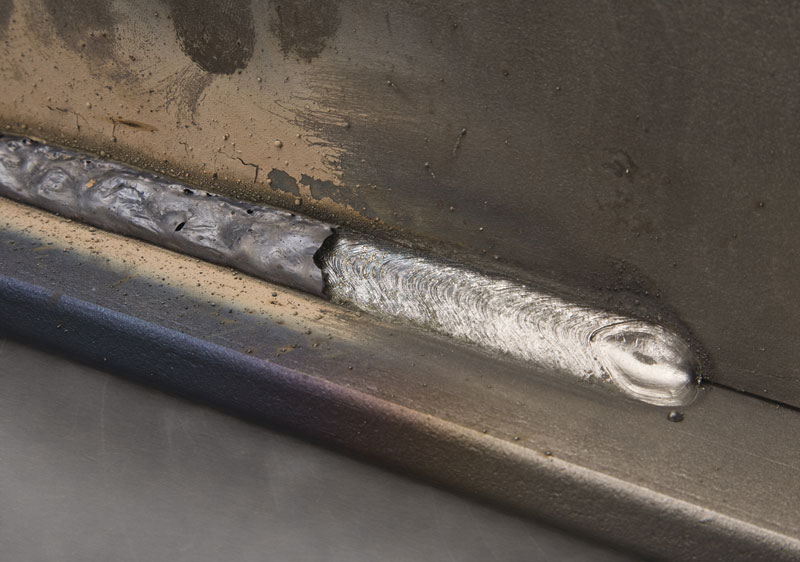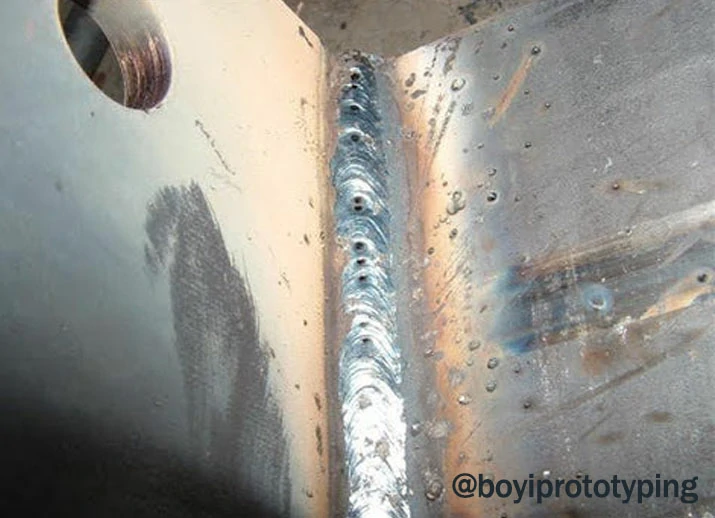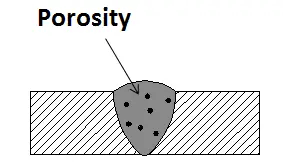Understanding Porosity in Welding: Exploring Causes, Results, and Prevention Techniques
As professionals in the welding industry are well conscious, understanding the causes, effects, and avoidance strategies associated to porosity is vital for accomplishing durable and dependable welds. By diving right into the root triggers of porosity, examining its destructive effects on weld high quality, and exploring reliable prevention approaches, welders can enhance their expertise and abilities to create premium welds constantly.
Usual Causes of Porosity
Contamination, in the type of dirt, oil, or rust on the welding surface area, creates gas pockets when heated up, leading to porosity in the weld. Improper shielding takes place when the protecting gas, generally made use of in processes like MIG and TIG welding, is not able to totally protect the liquified weld pool from responding with the bordering air, resulting in gas entrapment and subsequent porosity. Additionally, inadequate gas coverage, often due to inaccurate circulation rates or nozzle positioning, can leave components of the weld unguarded, permitting porosity to form.
Results on Weld High Quality
The existence of porosity in a weld can dramatically compromise the total quality and integrity of the welded joint. Porosity within a weld produces gaps or tooth cavities that compromise the framework, making it a lot more prone to breaking, deterioration, and mechanical failure.
Furthermore, porosity can hinder the effectiveness of non-destructive testing (NDT) methods, making it challenging to identify other issues or interruptions within the weld. This can cause significant security issues, particularly in vital applications where the architectural integrity of the welded elements is critical.

Prevention Techniques Introduction
Given the damaging influence of porosity on weld top quality, efficient prevention techniques are essential to maintaining the architectural stability of bonded joints. Among the primary avoidance methods is detailed cleansing of the base materials prior to welding. Contaminants such as oil, grease, rust, and moisture can add to porosity, so making certain a clean job surface is crucial. Appropriate storage of welding consumables in dry problems is also critical to prevent moisture absorption, which can bring about gas entrapment during welding. Additionally, picking the suitable welding parameters, such as voltage, existing, and travel rate, can aid reduce the threat of porosity development. Guaranteeing appropriate shielding gas flow and protection is one more vital avoidance technique, as insufficient gas coverage can result in climatic contamination and porosity. Finally, correct welder training and certification are important for carrying out precautionary measures successfully and continually. By incorporating these prevention techniques right into welding methods, the incident of porosity can be considerably decreased, causing stronger and much more reliable welded joints.
Value of Correct Shielding
Proper protecting in welding plays an important role in preventing atmospheric contamination and ensuring the honesty of welded joints. Shielding gases, such as argon, helium, or a combination of both, are commonly used to secure the weld swimming pool from reacting with elements airborne like oxygen and nitrogen. When these reactive elements enter call with the hot weld swimming pool, they can cause porosity, leading to look at this web-site weak welds with minimized mechanical residential or commercial properties.

Inadequate shielding can lead to different problems like porosity, spatter, and oxidation, endangering the structural honesty of the welded joint. Sticking to correct securing techniques is essential to generate top notch welds with minimal problems and ensure the durability and dependability of the welded elements.
Surveillance and Control Techniques
Just how can welders successfully keep an eye on and control the welding procedure to make sure optimum results and prevent issues like porosity? By continuously keeping track of these variables, welders can determine inconsistencies from the ideal problems and make instant changes to protect against porosity development.

Furthermore, executing appropriate training programs for welders is essential for keeping check that an eye on and managing the welding process properly. What is Porosity. Educating welders on the significance of preserving consistent parameters, such as appropriate gas protecting and take a trip rate, can help prevent porosity problems. Regular assessments and qualifications can likewise make sure that welders are skillful in surveillance and controlling welding procedures
In addition, the use of automated welding systems can image source boost monitoring and control capabilities. These systems can exactly control welding criteria, minimizing the probability of human error and ensuring consistent weld top quality. By combining sophisticated tracking innovations, training programs, and automated systems, welders can efficiently check and regulate the welding procedure to lessen porosity issues and accomplish premium welds.
Final Thought

Comments on “Comprehensive Guide: What is Porosity in Welding and Just How to avoid It”